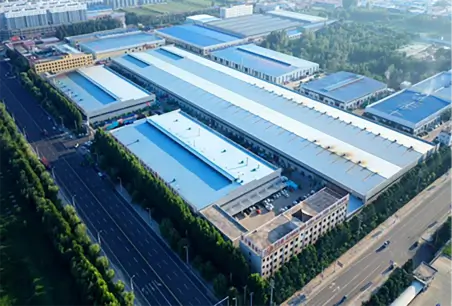The Versatility and Applications of Punched Metal Plates
Punched metal plates are becoming increasingly popular in various industries due to their versatility and functional benefits. These plates, created by punching holes or designs into metal sheets, serve diverse purposes ranging from aesthetic enhancements to structural support. This article explores the manufacturing process, advantages, and applications of punched metal plates in modern engineering and design.
Manufacturing Process
The process of creating punched metal plates typically begins with selecting the appropriate type of metal, which can range from aluminum and stainless steel to more specialized alloys. Once the metal sheet is chosen, it is fed into a punching machine that uses a die to create holes of various sizes and shapes. The precision of this process allows for intricate patterns and designs, catering to specific functional needs or artistic aspirations.
Numerous factors influence the design of punched plates, including the thickness of the material, the size and pattern of the holes, and the intended application. Advanced computer numerically controlled (CNC) technology enhances the accuracy and efficiency of the punching process, allowing for mass production without compromising quality.
Advantages of Punched Metal Plates
One of the significant advantages of punched metal plates is their lightweight nature compared to solid sheets of metal. This characteristic is particularly beneficial in industries where weight reduction is crucial, such as aerospace and automotive manufacturing. Additionally, the strategic arrangement of holes in punched plates can provide structural integrity while reducing excess material.
In terms of aesthetic value, punched metal plates offer an attractive solution for design elements in architecture and interior spaces. The patterns created by the punched holes can serve not only as decorative features but also as practical components that allow for ventilation, light diffusion, and sound absorption. In this way, punched plates achieve a harmonious balance between form and function.
punched metal plate

Moreover, punched metal plates are incredibly durable and corrosion-resistant, especially when composed of materials like stainless steel. This durability ensures that they can withstand harsh environmental conditions, making them suitable for outdoor applications such as facade cladding and garden installations.
Applications Across Industries
Punched metal plates find applications in a variety of fields. In the construction industry, they are frequently used in building facades to create visually striking designs while allowing air and light to penetrate the space. Additionally, they are utilized in making safety barriers, grilles, and protective enclosures for machinery and equipment.
In the automotive industry, punched metal plates serve multiple functions, including as components in exhaust systems and as structural elements that contribute to the overall efficiency of the vehicle. Their lightweight properties help in reducing fuel consumption without sacrificing strength or safety.
The manufacturing industry also benefits from punched plates, as these components are essential in machinery housings, filters, and conveyor systems. The customizable nature of these plates allows manufacturers to tailor them to specific machinery requirements, enhancing overall operational efficiency.
Furthermore, the art and design sectors are increasingly embracing punched metal plates for decorative screens, art installations, and furniture design. The interplay of light and shadow created by the patterns in the plates can transform a simple design into a captivating visual centerpiece.
Conclusion
Punched metal plates are a prime example of how functionality can blend seamlessly with artistry. Their manufacturing versatility, coupled with the numerous advantages they offer, makes them an invaluable resource across various sectors. As industries continue to evolve and innovate, the importance of punched metal plates will only grow, serving as essential building blocks in both functional infrastructure and artistic expression.
-
Versatility of Expanded Aluminum Metal for Various Applications
NewsMay.19,2025
-
The Geometry of Steel Gratings: Why It Matters
NewsMay.19,2025
-
Reinforcement Applications of Perforated Mesh in Masonry
NewsMay.19,2025
-
Essential Tools for Installing a Deck Mesh Railing
NewsMay.19,2025
-
Anti-Slip Flooring Made with Stainless Expanded Mesh
NewsMay.19,2025
-
Adjustable Steel Grating for Uneven Terrain
NewsMay.19,2025
Subscribe now!
Stay up to date with the latest on Fry Steeland industry news.

